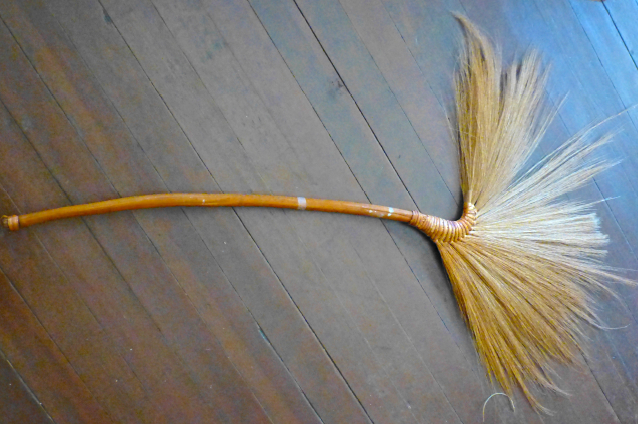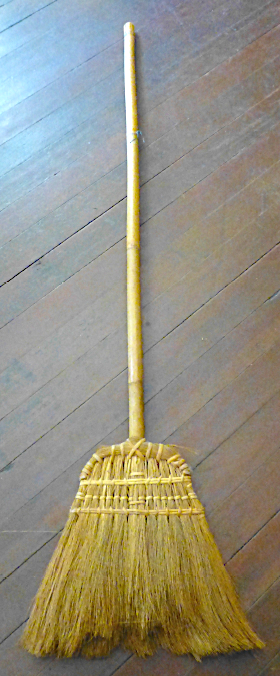Three Brooms


Unlike the feather duster, brooms are not considered prestige items, especially in island Southeast Asia, where these were produced. Because of their lowly household use, to touch a person with a broom is considered a relatively serious insult, and a small hand broom like the one to the near left was formerly part of the assemblage left in a home under construction in northern Borneo to keep malign influences at bay until other, more permanent arrangements were made for the finished dwelling.
Despite their use and lowly position, even brooms are constructed with an eye to beauty as well as to functionality. The whisk broom at the lower left in particular is beautifully constructed for use from its comfortably curved handle to the graceful arc of the grass; the manner in which the rattan binds the grass is both aesthetically pleasing and calculated to produce the broadest possible sweeping surface. However, even the more heavily used hand broom is an impressive construction, made as it is of betel palm ribs split into narrower and narrower fibers and bound simply with coordinating twine. The bamboo and grass broom is the most conventional of the three, but the elegance of the rolled grass binding belies its utilitarian purpose.
Bamboo, grass, rattan; 107 x 70.5cm. | Bamboo, grass, wicker; 122 x 31cm. | Palm ribs, rattan, grass twine; 65 x 14cm.
Nelson South East Asia Collection © 2025
